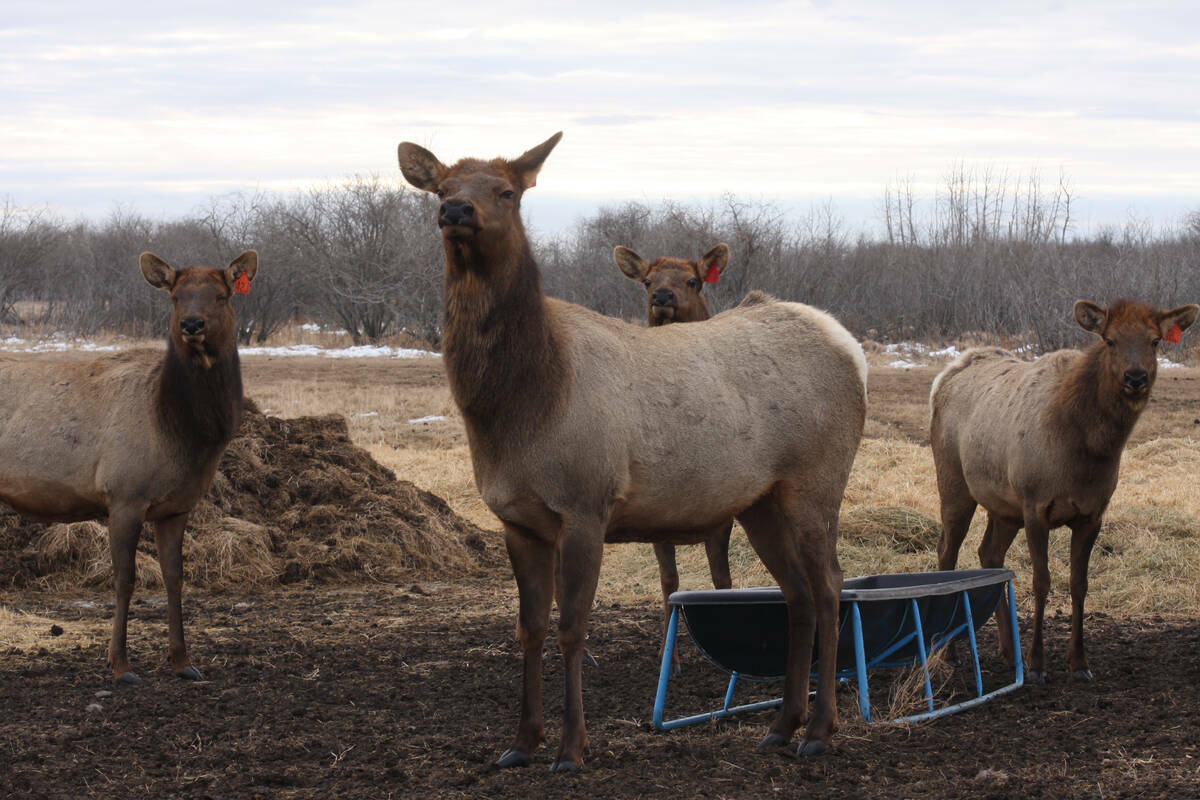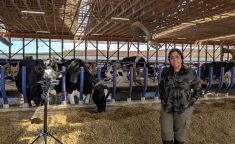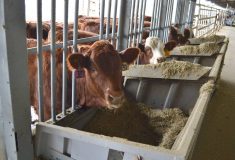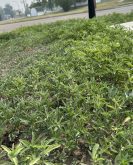It wasn’t long ago that sprayers able to distinguish weeds in a growing crop were in the ‘maybe someday’ file.
But that has changed, and a new green revolution may already be underway.
Some Prairie farmers have bought and are using green-on-green sprayers, even though the company involved is still adapting the software to Canadian soil.
Read Also

Cervid harvest preserves to be developed in the province under Bill 10
The Government of Alberta has given approval for creation of cervid harvest preserves.
“We’ve got six or seven early adopters running this technology this year. For over half of them it will be the first season using it,” said Mike Klassen, who sells the Agrifac AiC Plus spot-spraying system through Reesink Canada Wholesale in Lloydminster.
Technically, the AiC Plus is not a green-on-green platform in Canada — yet.
It’s being sold as a green-on-brown machine (think pre-season burn-off) that can be easily changed to green-on-green once the company adapts the process to Canadian farms and crops.
“That’s what’s driven some of our customers towards the system,” said Klassen. “They wanted the green-on-brown tech but didn’t want to invest in a green-on-brown system that’s not capable of green-on-green in the future.”
However, some farmers who bought the machines are using green-on-green algorithms not yet perfected for Canadian soil, strictly at their own risk.
“We’ve been very transparent that it’s there to use and try if you want but it’s not a commercially viable product,” said Klassen. “But this is a very unique group of risk-takers that are willing to work with this tech and understand it’s not at its full potential yet.”

Transformative tech
Klassen said he doesn’t know when the AiC Plus green-on-green algorithm will reach the Canadian market, but once it does, it won’t be alone for long. John Deere’s See and Spray Ultimate system is nipping at its heels with a possible Canadian release next year.
Regardless of who beats who to the local retailer, the technology looks poised to revolutionize how people farm, said Tom Wolf, a sprayer expert known as The Nozzle Guy.
Wolf recently called green-on-green sprayer tech one of the three most transformative technologies he’s seen in his career. He gave three reasons for this conclusion.
“The most obvious is that we can spray much less herbicide if this works,” he said. “We can literally spray just the weeds or the smaller weed patches in the fields even if they’re cropped. You don’t have to spray anything that doesn’t have weeds on it.”
The second reason is a little more proactive.
Because green-on-green should substantially reduce the herbicide bill, it would be good practice to invest those savings in more expensive tank mixes. That would delay the development of herbicide resistance, said Wolf.
“Obviously we’re not going to spray our way out of herbicide resistance because spraying is actually the cause of it. (But) we know that using multiple effective modes of action significantly delays the onset of resistance. It just buys us a little more time before resistance develops in a particular field.”
The third reason could be easier and more accurate field mapping, said Wolf, a possibility he called “incredibly exciting.”
Close up and personal
One of the most common field mapping technologies today is the Normalized Difference Vegetation Index (NDVI), which uses satellite imagery to detect field characteristics. However, this pales in comparison to a boom mounted with a camera that can take photos of weeds from a few feet above the ground.
“With NDVI satellite imagery we see new green patches or denser green and we infer those to be weedy patches,” said Wolf. “But the pixel resolution on those satellite images is very coarse — it’s several square metres per pixel. No identification is possible, it’s just kind of blurry.
“But if we have a camera on the sprayer, we can map the weed populations on that field and that has tremendous agronomic value. For example, we can look at the location of a weedy patch that might have escaped our notice. This might be an early resistance patch. We can do early interventions.”
It’s this real-time component that makes this potential so powerful, said Wolf.
“Weed maps change because of weather conditions and different crop rotations. But we can get kind of a dynamic view of their shape. That’s powerful. Now we can make very, very smart, informed, timely agronomic decisions.”
Custom algorithms
Wolf credits French startup Bilberry, the minds behind the AiC Plus, for being on top of the green-on-green game.
It partnered with Agrifac, a Dutch sprayer manufacturer, and the duo started making waves when they released green-on-green units to the Australian market two years ago. It recently entered the Canadian market, sold by Agrifac through distributors such as Reesink.
The AiC Plus runs on subscription-based algorithms that essentially tell it how to differentiate between weeds and plants on different crops.
“Each crop or each situation has its own algorithm software unlock,” said Klassen. “If there was a kochia algorithm, it would know what kochia looks like and it would be looking for kochia.”
Two centimetres is the smallest target it can hit. Testing has shown it can hit a target of that size more than 90 per cent of the time, said Klassen.
“The green-on-brown (algorithm) actually has a 95 to 98 per cent hit rate for targets two centimetres or larger at speeds up to 12 miles per hour.”
Identifying weeds in different situations is the work of very advanced AI.
“The algorithms are based on (plants’) shape and colour in different situations, so in green-on-green broadleaf and cereals, for instance, it knows that cereal crops are what looks normal and anything that doesn’t look like that is the target,” said Klassen.
Although it sounds simple, it’s an extremely technical process. In fact, Wolf called it “probably the single most sophisticated implementation of AI.”
“Image recognition is not easy,” he said. “It’s such a huge variety of plants and their shadings and their sizes. Whether they’re under some trash or they’ve been driven over by a wheel, there are variations in the way these plants look.”
So what’s the price tag?
The Agrifac AiC Plus unit with software will set you back about $200,000. The payback on that portion of the equipment should be fairly rapid, depending on the size of the farm and the size of its herbicide bill, said Klassen
“The goal with AiC — once fully-developed — is to reduce chemical across the farm by up to 50 per cent,” he said, emphasizing that’s an average and the reduction in chemical would vary depending on the crop, weed issues and specifics of a given field.
“If they’re able to reduce 25 to 50 per cent of their chemical use across the farm using green-on-brown and green-on-green tech together, it pays off pretty quickly.”
But a farmer would also need an Agrifac sprayer, as the machine and the AiC Plus unit are designed to run together. That raises the price tag considerably.
“I think it’s in that $1.3 million range by the time you’re fully outfitted with a 160-foot boom, the Bilberry system and algorithms, and a 2,100-gallon tank, which is the biggest and most expensive.”
Agrifac has released the first green-on-green sprayer to touch Canadian soil but it won’t be the last, said Wolf. There’s Regina-based Precision AI, for one.
“They’re trying to do this whole thing from fast-flying drones — the whole spot-spray, the whole mapping. They’re not on the market but they’re bringing it out to farmers for trials.”
Still, it’s early days and while green-on-green sprayer tech is promising, only time will tell if it catches on, said Wolf.
“Right now herbicides, for the most part, are still working as a tool to control weeds and not only are they working, they’re also affordable. I think the status quo is going to be very difficult to displace,” he said, adding that it might take a “crisis” for green-on-green to reach its full potential.
“The crisis will be that we’ve lost the ability to control weeds with herbicide. That could be the point at which this becomes really, really important for everyone.”
















